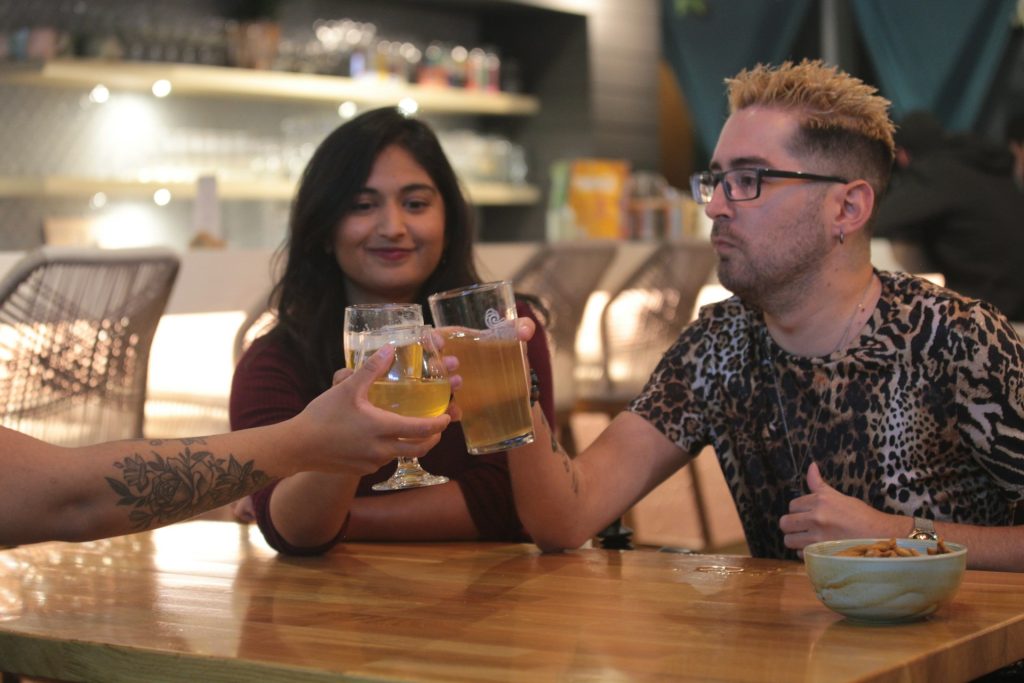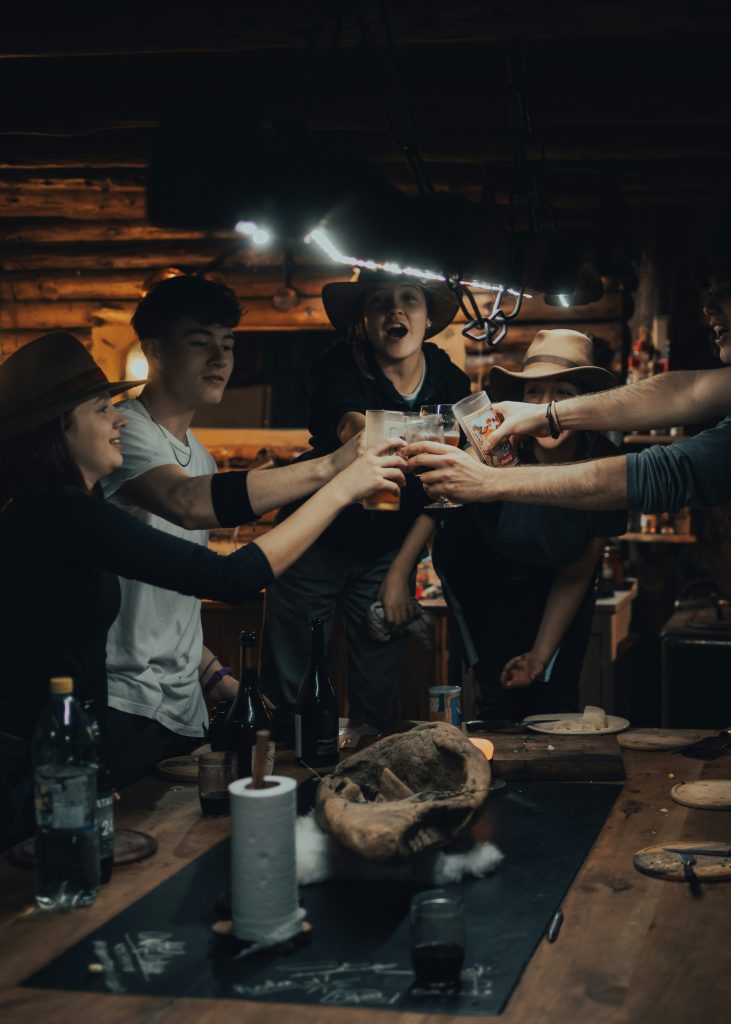While we’ve spent countless years devoted to the concept, vibe and lifestyle of what we consider the indie approach to life, I have to admit this is a new one on me: indie beer.
#MyBetterHalf (hereafter throughout this blog known as “an anonymous source”*) however, when I delightedly told her all about it while taking in her first coffee of the morning, was less impressed. “That’s been around for ever. You’ve never heard of it?”
This, I have to confess, took a little wind out of my sails, but not too much, because I was still ticking over with the genius of anyone who put together two of the things in life dear to my heart and very probably to yours: indie + beer.
So now here’s the thing:
You will no doubt have heard of craft beer and craft breweries; but apparently the small and independent breweries (especially in the UK) for whom the name was invented, are one by one turning their back(s) on the name.
Why you ask?
Because it turns out that they have become victims of their own success, or at least the “craft beer” tag has become a victim of its own success.
But first a very short history lesson:
While indie / craft breweries have been around for a good while now, something happened in 2002 that went a long way to make the veritable explosion of this craft beer industry a done deal.

Gordon Brown.
Yes, I know, but Gordon Brown. For it was he who, in 2002, just two years after devout followers of countless millennial cults found themselves looking for a new purpose in life, in his role as finance minister (okay in the UK they call it Chancellor of the Exchequer apparently but you know what I mean) of the UK, passed a law that massively reduced the tax bill of breweries around the country.
He did this by declaring that the first half a million litres of beer produced by a brewery would be taxed at 50% of the normal rate, but ONLY if the brewery produced less than 3 million litres a year (which sounds like a lot and is admittedly more than I get through in the averge year but still).
This made it possible for small breweries to compete with the larger industrial type ones, and gave birth to a new universe of truly independent breweries, able to experiment and come up with a huge range of new tastes and styles.
But.
After a while of this (during which the trend moved to the US where it also took veracious hold) the whole concept of craft beer and craft breweries became so successful that it inevitably awakened the interest of the large industrial beer breweries (and their marketing departments).
It didn’t take long after this of course that the industrial manufacturers decided to start trying to get in on this growing movement, and the potential profits contained therein. They started burrowing around, looking for small breweries who might be wiling to team up with them (and their budgets) to keep on growing, and of course, inevitably, there were takers.
Which came to the situation that we have now, where beer labeled as “craft” beer, while keeping the cachet of being sourced from small and independent (and usually local) breweries would often long since have been under the thumb of one of the small number of industrial major players in the beer brewing business.
For example:
- Goose Island (US) is owned by Anheuser-Busch InBev (who own Budweiser and countless others)
- Newcastle Brown (UK) is brewed by Heineken
- Dark Star owned by Asahi
…I could go on and on, but handily enough Pete Brown has put together an exhaustive list on his blog post about craft beer being taken over by ‘big beer’ right here, I encourage you to check it – and his writing generally – out.
Anyway, history lesson over.
So with this uptick in small breweries and microbreweries being such a hit with the more independent-minded beer drinkers, ‘big beer’ companies came along and started snapping them up.
But, a bit like Star Wars but without a Death Star (and more drinking), the craft beer world are fighting back.
In the UK for example, the Small Independent Brewers Association (SIBA) has been making some waves for its members. SIBA was originally set up in the 90s in the UK to fight against the “pub-tie” system, in which 80% of the UK’s pubs were owned and controlled by the large industrial brewing corporations (with the effect, obviously, that these pubs could only sell their beers, making it extremely difficult for independent or indie breweries to break through, and at the same time hugely limiting the range of beer types, styles and tastes that beer drinkers could try).
SIBA is one of the main proponents and founding members of a brand new group of national associations, launched in September 2024, called the IBE or Independent Brewers of Europe. Since the battle is pretty much the same across the board, this rebel alliance of men and women who like independence and beer are fighting to keep craft brewing (or indie beer) both known and easily identifiable.

But what exactly is indie beer?
Answer: Indie beer is beer made by an independently owned brewery. An independent brewery is locally owned and operated, usually by the brewers themselves and their families, or a small group of local investors. They are typically small to medium in size.**
And so (at long last, some of you might say) we come to the concept of indie beer.
While the “craft” name has served just fine for a very long time, with this sneaky attack from the Empire industrial beer brewing companies has resulted in “craft” becoming a wishy-washy marketing name that doesn’t necessarily mean anything.
Instead of “craft” meaning that it’s artisanal in the respect that it’s made by small, independent breweries (“The craft brewer definition from the Brewers Association: An American craft brewer is small, independent and traditional.”), “craft” has been co-opted by the big boys to mean…well, nothing much at all in the end. The consumer might be opting for a craft beer just for the taste – in which case all well and good – but they might just also be wanting to strike a blow for the rebels support small, local and independent (see indie) businesses; they might also be lovers of beer wishing to support other lovers of beer.
In which case, it all goes tits up.
And that’s how true “craft” beer is now being renamed as “indie beer”, in order to take back ownership of the indie approach to beer brewing.
Indie / Craft beer in Germany
It’s true, we’re a Berlin-focused website, and since for better or worse Berlin happens to be located in the middle of Germany, I think it’s only fair we give at least a brief mention to the state of indie beer in Germany.
If you live in Germany and you’ve ever had a conversation of any kind with a German about beer, you will definitely have heard of the Reinheitsgebot (purity decree), which states that beer can be made ONLY from three ingredients: water, barley and hops. A lot of Germans feel strongly about this and you can definitely have a forthright conversation about it, especially if you’ve both / all inbibed a certain amout of said liquid, which does tend to bring impassioned argument to the fore.
Some facts about Germany’s beer Reinheitsgebot
The purity decree was put into force back in the 16th Century in Bavaria. Interestingly enough it was actually originally to protect the baking of bread, so that certain ingredients would be reserved for bread and not made into beer but that’s (by now) by the by.
When Bavaria was subsumed into Prussia in the 19th Century, one of their sticking points, for sticklers they were, was that their beloved Reinheitsgebot was kept and in fact extended to cover all of the new Germany. The other Germans hummed and hawed but over a quick pint it was eventally decided and from that day forth, beer in Germany could only be made from those three ingredients.
All well and good, you might say.
While this purity decree for German beer became a point of some pride to most if not all German beer-drinkers, there were still some that dared whisper that a. it wasn’t really all that necessary and b. it was to some extent perhaps stifling innovation in the beer brewing world.
Still, the fact remains that Germany does tend to prefer a bunch of rules to innovation (yes, subtle dig there, but I’m allowed) and so the Reinheistgebot persisted and was in fact the oldest existing food quality regulation in existence, at least until 1987.
Until 1987 the Reinheitsgebot was part of German law. It was also the oldest food quality regulation in the world remaining in force
german-way.com
But as of the beginning of the 90s the good old EU came along and declared that this Gebot had to go, since it was also seen to be a form of protectionism for German breweries, and the playing field was going to have to be level or the EU would take its ball and go home.
From that point on the Reinheitsgebot was no longer law. However, the bulk of German breweries stuck with it, since it was by now tradition.
Cut to today
however, and despite Germany being traditionally one of the great beer-drinking (and brewing) countries, they’re slipping (there’s a pun in there somewhere but at this point I can’t be bothered). In the last three decades, beer consumption has dropped drastically, to the point that Germany has slipped from second place in the pantheon of international beer consumers (behind the mega-market that is the USA) to fifth, behind China(!), Russia and Brazil.
While it is now technically possibe and permissible for Germans to do the whole craft brewery thing, it hasn’t really caught on to the same extent as in for example the UK and the US. Reinheitsgebot or no, Germany is a nation of pilsner drinkers, and the difference between the various sorts is (and I’ll no doubt be crucified for saying this) not all that different from each other.
Yes, you also have Altbier and Weizenbier, but let’s not get distracted.
Meanwhile, there is a little hope in Germany: there has recently been a wave of brewpubs opening (pubs that sell the beer they brew themselves) and this is providing the first hint of the possibility of a new wave of indie beer / craft beer rising up.
“These new artisanal breweries cater to a small, but growing clientele of German beer connoisseurs who are interested in beer variety and stylistic innovation” – Beer and Brewing
So there you go.
Craft beer, and the people who love it, are fighting back. Long live beer. Long live indie beer. And long live the rebel alliance.
*probably
Featured image by palomaclaricefotografia via pexels.com
If you want to know more about (or drink more of) indie beer, these are some good links: https://www.independent-brewers.com/ // https://untappd.com/ // https://www.siba.co.uk/ // https://private-brauereien.de/





0 Comments